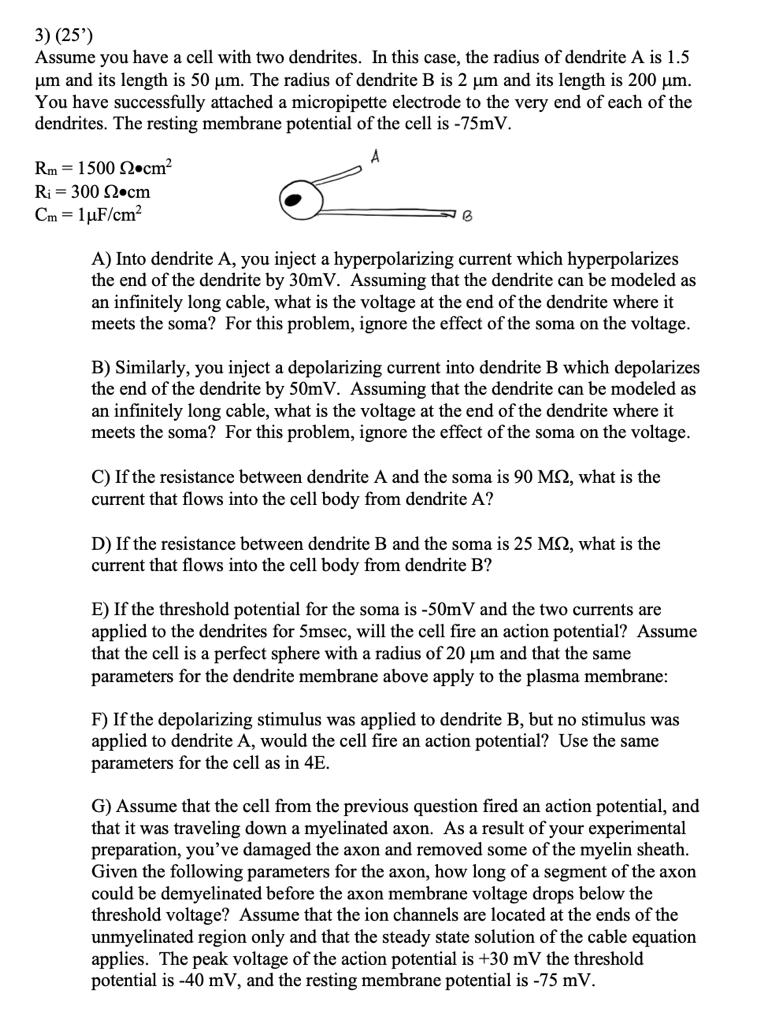Answered step by step
Verified Expert Solution
Question
1 Approved Answer
How to do ? with explanation pls . thanks Assume you have a cell with two dendrites. In this case, the radius of dendrite A
How to do with explanation pls thanks
Assume you have a cell with two dendrites. In this case, the radius of dendrite is
and its length is The radius of dendrite B is and its length is
You have successfully attached a micropipette electrode to the very end of each of the
dendrites. The resting membrane potential of the cell is
A Into dendrite A you inject a hyperpolarizing current which hyperpolarizes
the end of the dendrite by Assuming that the dendrite can be modeled as
an infinitely long cable, what is the voltage at the end of the dendrite where it
meets the soma? For this problem, ignore the effect of the soma on the voltage.
B Similarly, you inject a depolarizing current into dendrite B which depolarizes
the end of the dendrite by Assuming that the dendrite can be modeled as
an infinitely long cable, what is the voltage at the end of the dendrite where it
meets the soma? For this problem, ignore the effect of the soma on the voltage.
C If the resistance between dendrite A and the soma is what is the
current that flows into the cell body from dendrite A
D If the resistance between dendrite and the soma is what is the
current that flows into the cell body from dendrite B
E If the threshold potential for the soma is and the two currents are
applied to the dendrites for msec, will the cell fire an action potential? Assume
that the cell is a perfect sphere with a radius of and that the same
parameters for the dendrite membrane above apply to the plasma membrane:
F If the depolarizing stimulus was applied to dendrite B but no stimulus was
applied to dendrite A would the cell fire an action potential? Use the same
parameters for the cell as in
G Assume that the cell from the previous question fired an action potential, and
that it was traveling down a myelinated axon. As a result of your experimental
preparation, you've damaged the axon and removed some of the myelin sheath.
Given the following parameters for the axon, how long of a segment of the axon
could be demyelinated before the axon membrane voltage drops below the
threshold voltage? Assume that the ion channels are located at the ends of the
unmyelinated region only and that the steady state solution of the cable equation
applies. The peak voltage of the action potential is the threshold
potential is and the resting membrane potential is

Step by Step Solution
There are 3 Steps involved in it
Step: 1

Get Instant Access to Expert-Tailored Solutions
See step-by-step solutions with expert insights and AI powered tools for academic success
Step: 2

Step: 3

Ace Your Homework with AI
Get the answers you need in no time with our AI-driven, step-by-step assistance
Get Started


